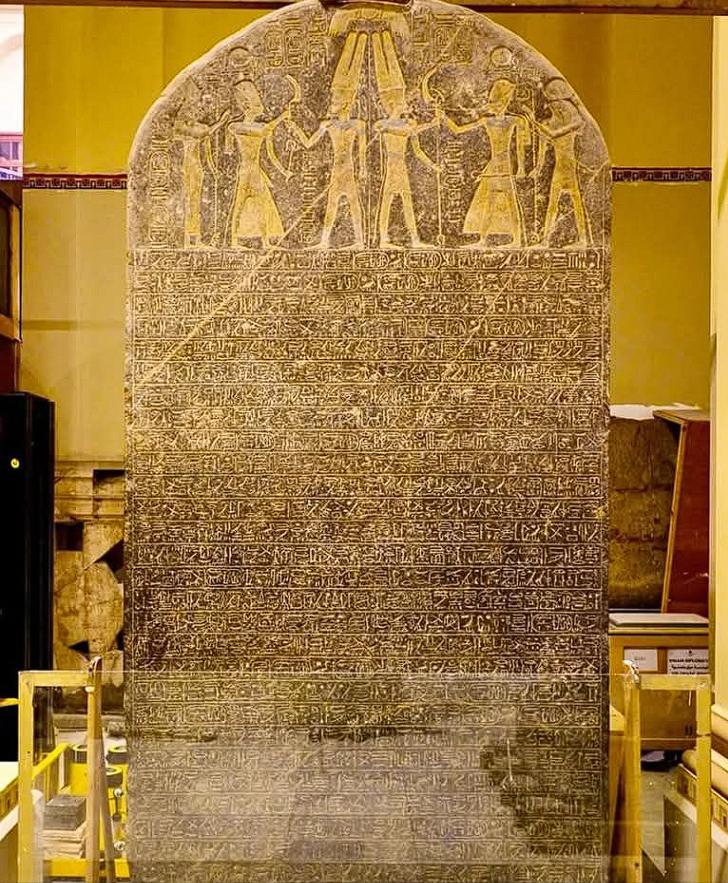In the year 1896, the renowned archaeologist Flinders Petrie made a significant discovery in the ancient city of Thebes: a towering black granite slab adorned with intricate hieroglyphs commemorating the military victories of Pharaoh Merneptah. However, what Petrie unearthed was far more than a mere enumeration of battles won; it was a profound historical revelation etched in stone.
The Israel Stele: A 3,200-Year-Old Glimpse into Ancient Geopolitics
Now widely recognized as the Merneptah Stele, or often referred to as the Israel Stele due to its pivotal content, this 3,200-year-old monumental inscription stands as the earliest known Egyptian text to explicitly mention “Israel” by name. Dated to approximately 1208 BC, during the reign of Pharaoh Merneptah, the stele offers an exceptionally rare and invaluable glimpse into the complex political landscape of the ancient Near East during the Late Bronze Age.
A Pharaoh’s Triumphs: Boasting of Libyan and Other Conquests
The majority of the inscription meticulously details the military triumphs of Pharaoh Merneptah over the Libyans and various other adversaries who posed a threat to Egypt’s power and stability. These passages celebrate the pharaoh’s military prowess and his success in maintaining Egyptian dominance in the region, providing crucial insights into the conflicts and alliances of the time.
A Brief but Significant Line: The Emergence of “Israel”
Near the concluding sections of the inscription, a concise yet historically significant line appears: “Israel is laid waste, his seed is not.” This seemingly brief statement has ignited endless debate and scholarly fascination for over a century. Within this single phrase, Israel is not depicted as a fully established nation-state with defined borders, but rather as a distinct people group—already recognizable, already known to the Egyptians within their geopolitical sphere.
A Non-Biblical Reference: Bridging History and Scripture
Carved into the enduring granite during Egypt’s 19th Dynasty, the Merneptah Stele remains one of the very few extant non-biblical references to the entity of Israel dating back to the crucial Late Bronze Age. This makes it an indispensable piece of the intricate historical puzzle, effectively bridging the disciplines of archaeology, biblical scripture, and the broader understanding of ancient geopolitics through just a handful of powerfully chiseled words. Its significance lies in its independent corroboration of Israel’s existence as a distinct people in the ancient Near East during this pivotal period.

CÁC TIN KHÁC
Mary Walton: The Forgotten Inventor Who Helped Clean Up America’s Cities
Tomb of Queen Nefertari in the Valley of the Queens, Egypt
Discover the Hypostyle Hall of the Temple of Hathor at Dendera
Venus de Losange: Unveiling the Mystery of a 20,000-Year-Old Paleolithic Icon